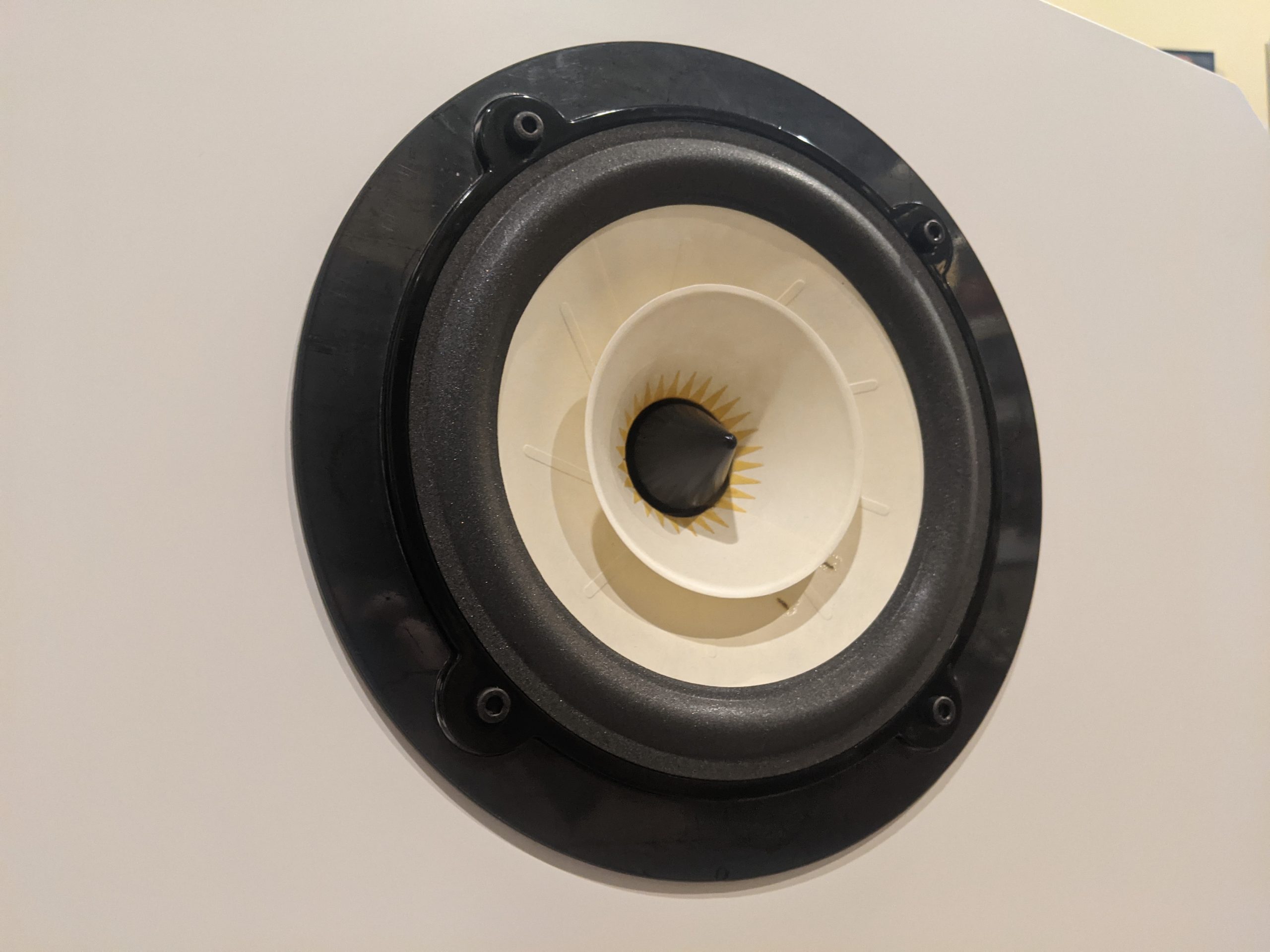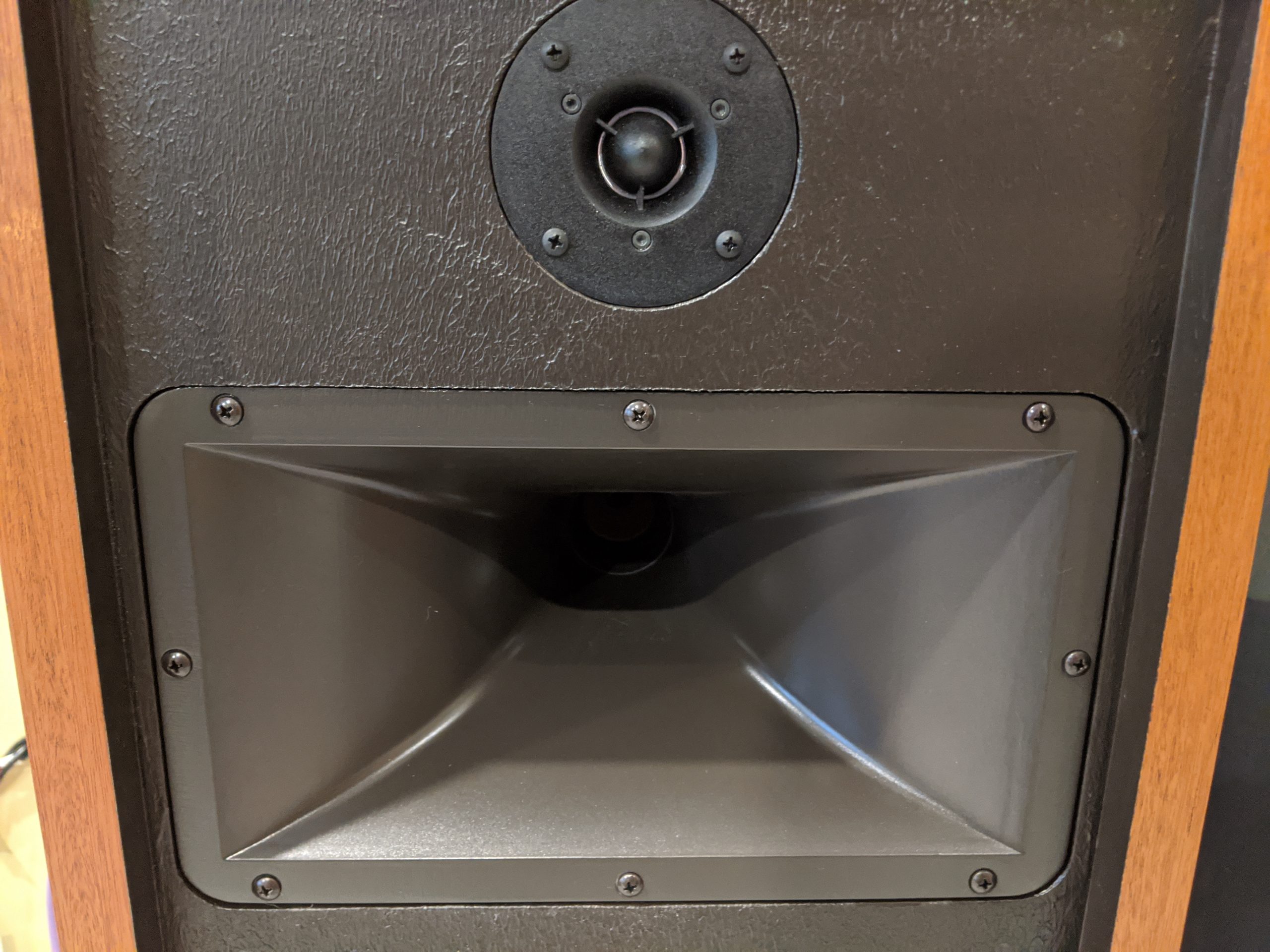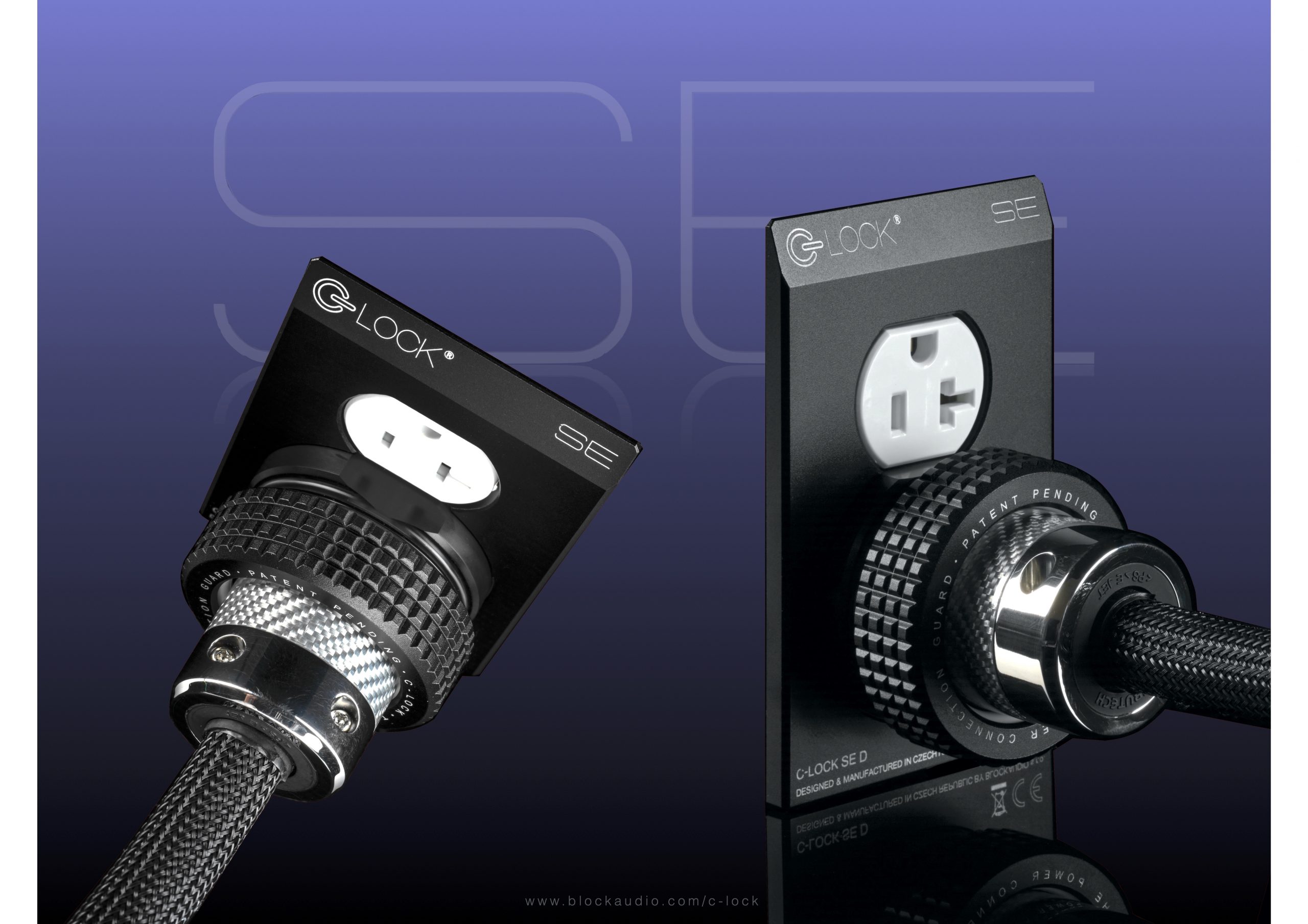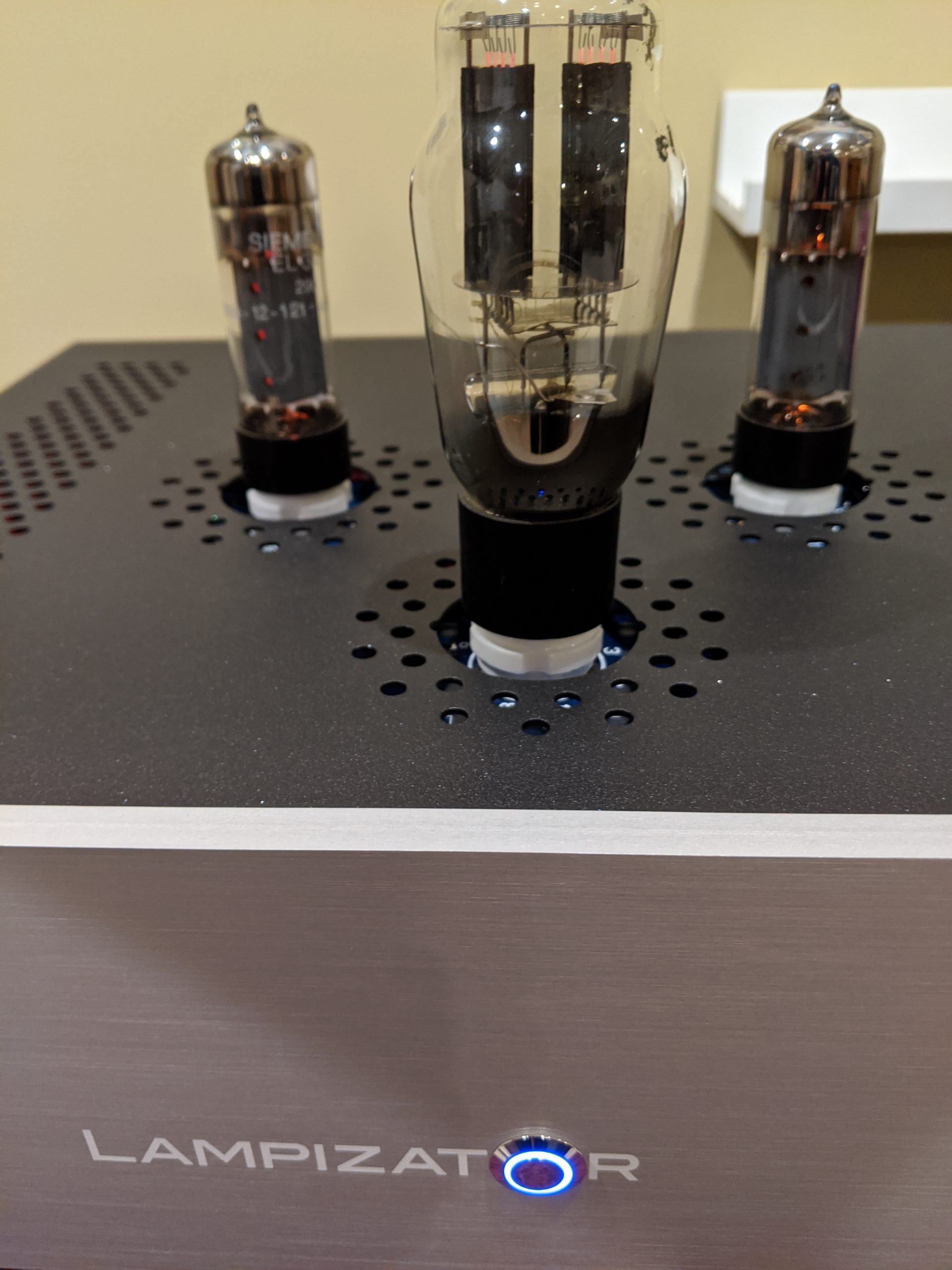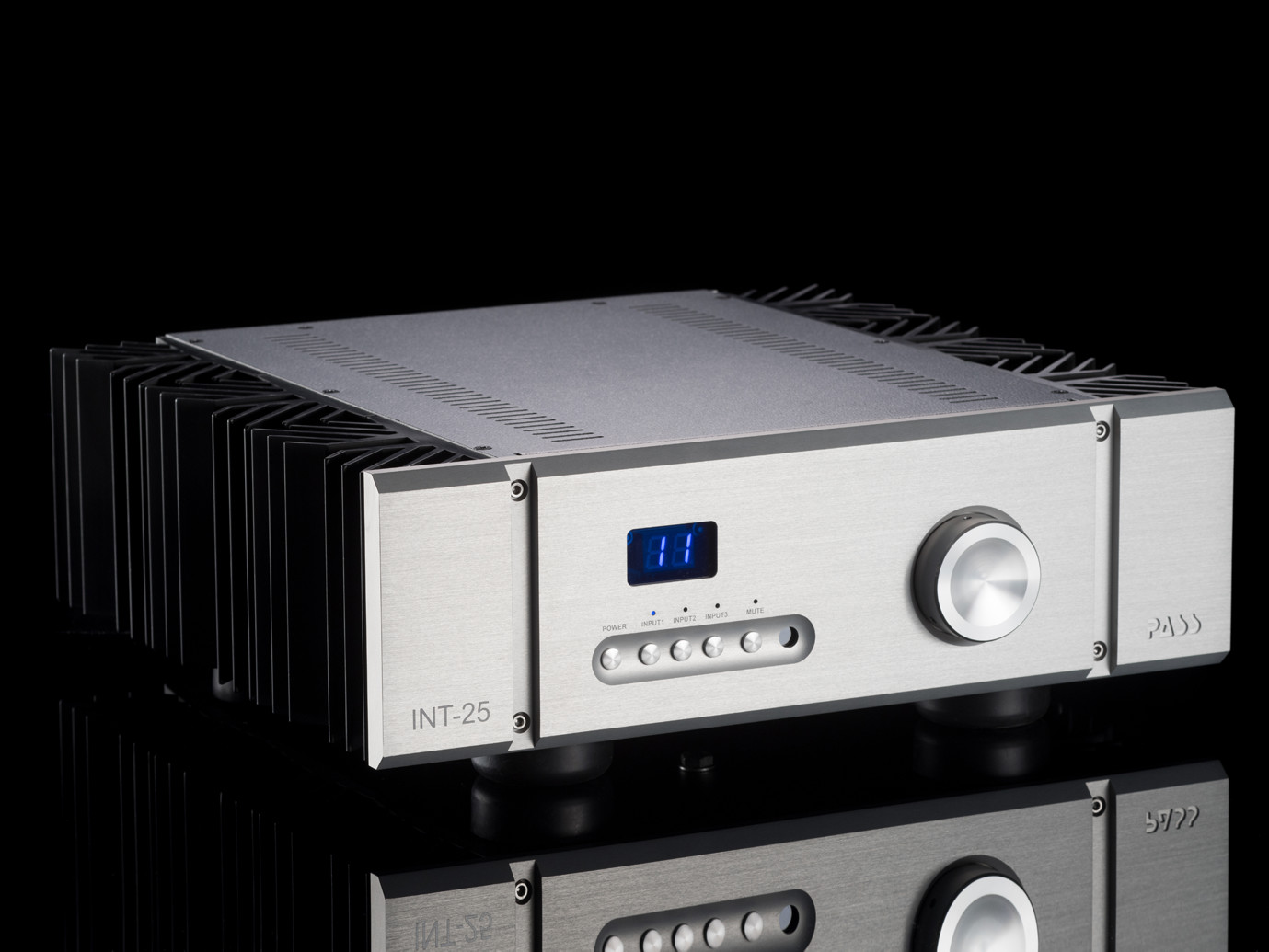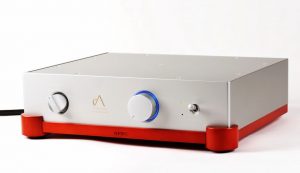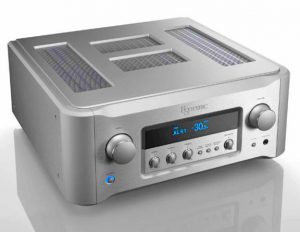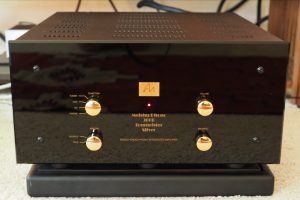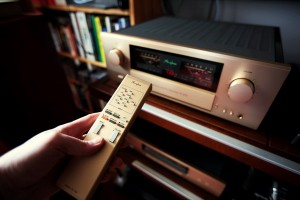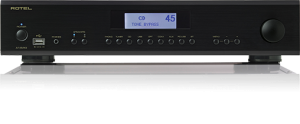In 2013, tempted by the siren call of a full-range floor standing speaker, I sold my longtime reference, the sweet sounding single driver Omega Super Hemp Alnico, and moved to the multiple drivers of the Von Schweikert VR35 Export Deluxe. My current amp stable serves the music admirably, yet there is no question that the VR35s benefit from a big 'ol glass of V*I juice for high volume listening. Being primarily a tube guy, I went looking for a high power push-pull tube amp to try out. Having heard many positive complements on the sound of Rogue Audio's tube amps, I contacted Mark O'Brien of Rogue to ask about the new ST100 stereo tube amp. Alas, fellow Positive Feedback writer Andre Marc had claimed that thermionic prize before me! As an alternative, Mr. O'Brien asked if I'd like to be the first to review the new Rogue Audio Pharaoh Hybrid Integrated Amplifier. I quickly accepted and a few weeks later it arrived, well packed and beautiful.
Pharaoh: The Great House of the King
This was my first experience with a Rogue product. It is nicely appointed and well built. With a rated output of 185 watts per channel into an 8 ohm load, the Pharaoh is the flagship integrated in the Rogue Audio product line, and follows a classic full featured integrated amplifier design formula: Inputs for Phono, CD, Aux 1, Aux 2, Unity Gain (HT Bypass) and XLR. It also features Variable and Fixed Outputs as well as a Processor loop, balance control, a heavy duty, aluminum remote that controls volume/mute functions, and a headphone amp all housed in a steel chassis with thick brushed aluminum front plate. This is a very nice feature set, but there is one more jewel worn by this King of the Pennsylvania Valley: Rogue Audio's "Tube D" hybrid design which features a very large Toroidal transformer based linear power supply; a pair of Czech long plate 12AU7 (ECC802) vacuum tubes in a Mu Follower preamp section and the Full Bridge Hypex Class D UCD400OEM MOSFET amplifier modules.
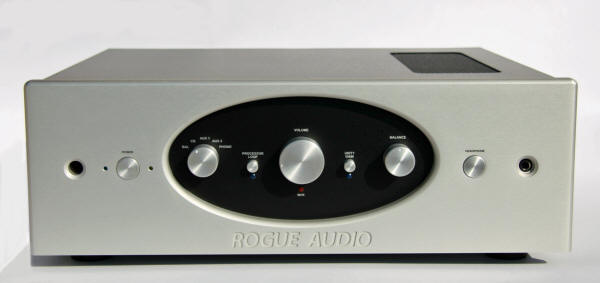
The RCA input/output jacks, speaker posts and case work especially the beautiful and substantial black aluminum face plate—are very nice, but the real value is inside this beauty of an integrated amplifier. With a pristine internal layout and liberal use of high-end parts like Mundorf EVO Oil Coupling capacitors, Vishay resistors and a custom ALPS motorized volume control. Rogue is serious about getting the best out of the Pharaoh. A few minor notes of the operational kind: There is a "vacation" power switch on the rear that keeps the solid-state section warmed up; the tube section is powered up by a push button on the front panel. The selector switches feel a bit clunky when compared to the soft touch control systems seen on many components these days, but they work well. I do wish there was a second set of speaker posts for bi-wiring, but that's just me most people won't give a hoot. During my months with the Pharaoh, it worked famously without complaint.

The Sound of a New Dynasty?
I'm not a Class D newbie, but I will say that the Hypex UcD modules sound much more like music than the Tripath and TI amps I'd heard years earlier. After a short break in of 50 hours or so, I started listening with intent to be serious (seriously). While it can be argued that separates can be more accomplished than integrated components, it is hard to dispute the simple joy of connecting only one component to handle the majority of audio playback tasks. The Rogue certainly fits this mold; well built with a high degree of usability, yet at the same time, joyfully simple to operate. The Pharaoh's sound however, is not so simple; it's complicated, and this complex sound has captivated me for months. In fact, I was enjoying the amp so much that I had not written one word in the first 30 days the amp resided in the Beard Rock 'n Roll Bar and Listening Room. Quite unfortunately, about the same time I realized I'd better be intending to get serious about writing; I took a tumble down some stairs and blew out my shoulder. That was way back in November 2013. Mr. O'Brien graciously allowed me to keep the amp until I was up to the task. So while it is possible that slipgoboom may have cost me a scoop as an audio scribe, it permitted me to enjoy the amp for a gratifyingly long time!
It Has Been Reported that King Tut Had Golden Ears and a Tube Fetish…
One could assume that the addition of tubes to a solid-state amp would provide a dash of warmth, a smidge of smooth and a tad of organic goodness. But there is way more to the Pharaoh's sound than a little glowing warmth. This amp is eerily quiet, images are dense and focused. And although this is not a cool, sterile amp, don't expect it to gloss over flaws or strident recordings like a classic big bottle SET. There is a bit of treble edge on John Mellencamp's Cuttin' Heads that I have heard on every system I've owned. The Rogue plays this recording with visceral clarity and constructs a beautiful musical picture without obstructing that tinge of grit/grain. And this is really the story of the Pharaoh; no embellishment, just unvarnished, exceedingly enjoyable music.
In my book, the Pharaoh is a bass monster, but it should be duly noted that I have an extreme distaste for "big box HT bass" where the sub is turned to 10 and woolly crap is blowing out windows and eardrums and the salesman is clueless about how awful it sounds. I want to hear tonal richness and low end dynamic wallop within the frame of the music. Sade's Best of the Best Gold CD is full of rich, sinewy, meaty bass lines and the Pharaoh reproduces them with stop on a dime speed, tuneful agility and slam. A complete absence of background noise is a strong point of this amplifier and this impacts the bass performance as well. When listening to "Animal/Work" from Joe Bonamassa's side project Rock Candy Funk Party's We Want Groove, the sound of the bass is otherworldly as it jumps out of blackness, huge, tight and fast. The microdynamics of the percussion are superb as witnessed by the lonely snare rolling away deep in the background of this hauntingly beautiful mix.
This amp does not seem to impart much of its own signature on the music and if the tubes do warm the sound, it is hard to distinguish apart from the whole. Every musical selection was smooth and extended with terrific resolution, very good layering and separation of instruments and voices. There is body and weight to the music, but I didn't notice quite as much texture or tonal color as with the finer tube amps I've heard. Then again, I doubt those same tube amps are as neutral and transparent as the Pharaoh. Tonality is very good, but the aural vision is decidedly uncolored in comparison to my own tube amplifiers. On her excellent 1998 CD What I Deserve, Kelly Willis serves up an emotional performance on a pretty good recording. While hearing this impassioned state is as much a function of system/listener synergy as it is the capability of one component, some systems have melted my ears rather than my heart. For all its neutrality, the Pharaoh is still able to infuse this recording with the passion it deserves (ahem). With every album, CD, or computer music file, my listening experiences were similar; each selection was unique, allowing the recording to be the focus. As I alluded to earlier, I found the Pharaoh to be noiseless at idle, with such a low noise floor that music could be enjoyed at low volume without sacrificing resolution. This is a big deal to me, as I generally listen at fairly low levels. Imaging is a real strength and the stage is wide and deep. Initially, I felt the Rogue had a midhall perspective, but the more I listened, it was obvious that staging, as it should be, is recording dependent. On "He Won't Go", from the fantastic 21 album, young Brit sensation Adele is front and center, the images large and dense, as if I am sitting in front of the recording session.
Over the months I listened to this amplifier, my notes contained a number of entries that I believe are valid descriptors of the Pharaoh:
Toe tapper.
Deep, tuneful, fleshed out bass.
Airy and cohesive, fine detail and nice midrange.
Extremely black background.
No glare. Clean and green!
Sound is very slightly warm? Not at all sterile tubes in preamp?
I learned to spell Pharaoh!
In my experience, this amp's strengths are its great resolution, lifelike dynamics, neutral tonality, and excellent bass. But as is the hallmark of value, the sum is always greater than the parts. The Rogue Pharaoh offers a great deal of flexibility for the money AND drives the hell out of the VR35s. I normally listen at 80-85dB peaks or lower... pretty sane levels to keep the old ears from crapping out—but I couldn't resist cranking the volume a few times one evening. As long as I kept the knob in check and the amp/speakers out of clipping, it was superb fun. The Doobies "Clear as the Driven Snow" from the Captain and Me was a great listen. When cranked, the room filled with wonderfully dynamic sounding drums, guitars, keys, fabulous harmonies that were always non fatiguing and never strident... just fantastic 1970s kickass rock n' roll! The Doobie's were so good I couldn't help myself, so I cued up The Who's "Baba O' Riley" from one of my favorite albums of all time; Who's Next. The signature synthesizer opening was as wide as the room was; perhaps a bit more raw and unrefined than the hi-rez Doobies, but I could feel those days of Teenage Wasteland welling up inside and it made me feel like running out to piss on someone's concrete monolith! Lastly, I put on 20 All Time Greatest Hits of the man himself, James Brown. There was an immediate groove; front row smilin', swivel hip grindin', serious R&B. The brassy horns and James' musical scream in "Mother Popcorn Pt.1" was abSOULutely in my room!
That was one hell of an evening of music…
The Pharaoh's Court Adds Value
The Rogue's built-in Phono section uses the 12AU7 tube section to provide preamplification for LP playback and has adjustable loading using dip switches that reside inside the amp. Gain is selectable for use with Moving Magnet, High and Low Output Moving Coil cartridges. I enjoyed listening to its excellent separation, cavernous stage and driving dynamic vibe with my own Music Hall MMF9 on the factory moving magnet setting. In addition to the fine Phono amp, there is a discrete tube headphone amp with a front mounted ¼" jack. A pushbutton next to the headphone jack turns off the output to the speakers. In this state, an amber LED lights to let you know that the speakers are off, while the tube headphone circuit and low voltage solid-state circuits remain energized. My Beyerdynamic DT770 Pro headphones required a couple nudges up to get a decent volume, and while I can't listen to headphones very long these days, my short stints with the Pharaoh sounded smoothly balanced and eminently musical.
Cleopatra Needed a Rogue on the Party Barge!
The Rogue Audio Pharaoh Integrated Amplifier is one sweet piece of audio gear. In the rarefied and sometimes stupidly expensive hobby of hi-fi, this integrated amp is a fantastic value. I want to thank Mark O'Brien and Rogue Audio for the opportunity to live with it for so long. And while the hybrid sound of Tubes and Class D may not be for everyone, there is no question that Rogue has a given the audiophile community another wonderful product choice that should mate well with a variety of speakers and is exceptionally energy efficient to boot. The Pharaoh provides a highly evolved sound and a lot of bell ringin', whistle blowin' function for what we audio nuts consider a reasonable price. Don't believe me? Go have a listen for yourself, I think you'll be quite impressed.
Pharaoh General Features:
-
185 WPC/8 ohms 350WPC/4 ohms
-
Pure tube mu-follower preamplifier
-
Slow start automated logical turn on
-
Green design with extremely low power consumption
-
Damping factor > 1000
-
Discrete tube based headphone amplifier
-
Three pairs of line level inputs
-
One pair phono inputs, mm/mc with 40/60 dB gain
-
One pair balanced XLR inputs
-
Adjustable phono loading (custom values available)
-
Tube driven 1/4" headphone jack
-
Massive high storage linear (!) power supplies
-
Mundorf EVO oil coupling caps
-
Precision components throughout
-
39 pounds/45 pounds shipping weight
-
18.25" wide x 18" deep (incl. posts and knobs) 6.5" high
-
Fully tested, burned in, and auditioned
-
Detachable IEC power cord
-
Entirely designed and hand built in the USA
-
3 year limited warranty (6 months on tubes)
Pharaoh Integrated
Retail: $3495
Rogue Audio
www.rogueaudio.com




